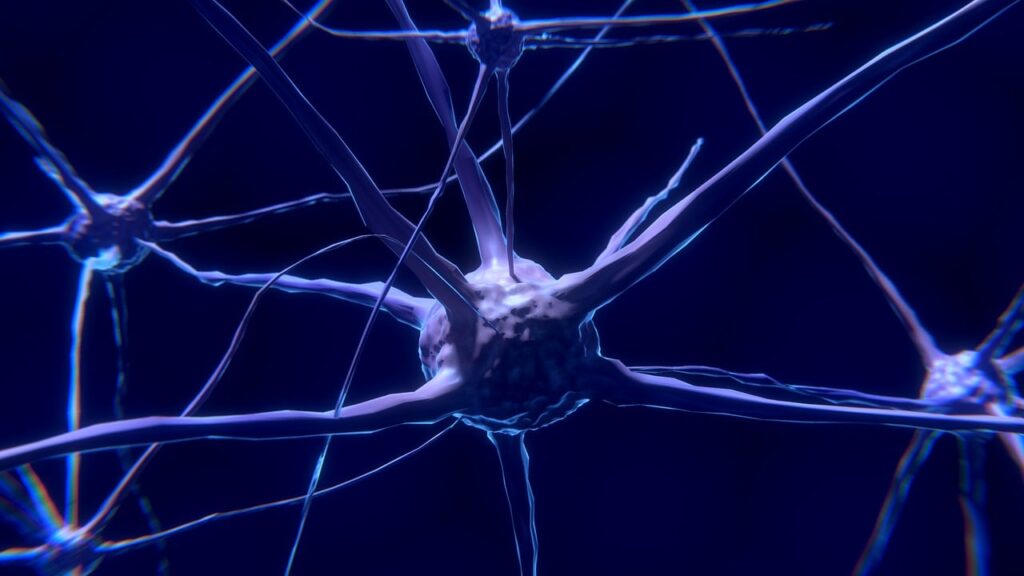By Debbie Bunch
March 11, 2024

Gasping for Air, Explained
The Hering-Breuer reflex, which is triggered by neurons that sense the airway is being stretched and works to protect the lungs from over-inflation, was discovered in the 1860s. Researchers from Harvard Medical School believe another group of neurons is behind a newly discovered reflex of the vagus nerve that causes people to gasp for breath when the lungs are constricted.
The study began with experiments in mice that involved restricting their breathing and recording their physiologic reactions, along with the response of neurons in their lungs. Genetic tools were also used to activate and deactivate the lung neurons to see how this activity or inactivity affected respiration.
The researchers found that when the mice reflexively gasped for air in the face of airway closure, a particular subgroup of vagal sensory neurons was more active. When those neurons were deactivated, the mice no longer gasped for air in response to airway closure. When they were activated, the animals gasped even in the absence of airway restriction.
Those findings pointed to a dedicated reflex through the vagus nerve that is activated by airway closure and leads to gasping.
But how do the neurons prompt a gasping reflex? The investigators determined that the neurons sit in the lining of the respiratory tract and have a distinct chandelier-shaped structure, with each “arm” of the neuron leading to a cluster of cells called neuroepithelial bodies (NEBs). From there, they showed that NEBs express a force-sensing protein called PIEZO2 that is also involved in sensing touch in the skin. Disabling PIEZO2 eliminated the gasping reflex.
The researchers are planning additional studies to find out more about how NEBs and PIEZO2 are involved in respiratory physiology and lung conditions. The study was published by Nature. Read More

Hispanic Patients Receive Five Times More Deep Sedation Than Non-Hispanic White Patients
In a secondary analysis of data from a large clinical trial, U.S. researchers have found that Hispanic patients on mechanical ventilation are significantly more likely to be overexposed to deep sedation than their non-Hispanic white counterparts.
The study, which was conducted in 48 facilities nationwide, included 505 patients with moderate to severe ARDS who were mechanically ventilated. Even though light sedation was recommended, an analysis of how much sedation the patients actually received showed more than 90% were deeply sedated at some point over the first five days on mechanical ventilation. Seventy-five percent of those days were spent in deep sedation.
Hispanic patients were five times more likely to receive deep sedation than their white counterparts, even after the findings were adjusted to take demographic, clinical, and hospital characteristics into account.
“Deep sedation is a known risk factor for death as well as a host of other major long-term problems,” said study author Mari Armstrong-Hough, from New York University. “This is an especially important finding because oversedation is modifiable — in other words, we can do something about it.”
The authors aren’t sure why Hispanic patients were more likely to receive deep sedation but suspect language barriers and cultural differences between patients and clinicians played a role. Addressing these factors could help eliminate the disparities seen in their study.
The study was published by the Annals of the American Thoracic Society. Read More

Dietary Nitrate Supplements May Ease Dyspnea
Could a dietary nitrate supplement improve outcomes for your COPD patients? That’s the question investigators asked in a study that looked at previous research on nitrate supplementation for people with COPD.
The authors identified 11 studies involving 287 patients that met their criteria for the meta-analysis. The combined results showed —
- Plasma nitrate and nitrite concentrations were increased in subjects that took dietary nitrate supplements.
- Fractional exhaled nitric oxide also increased in these subjects.
- Exercise capacity and endothelial function were improved with nitrate supplementation, and subjects who took the supplements reported relief from dyspnea as well.
The authors believe dietary nitrate supplementation may have a role to play in the treatment of people with COPD, particularly when it comes to relieving dyspnea. The study was published by Pulmonology. Read More






